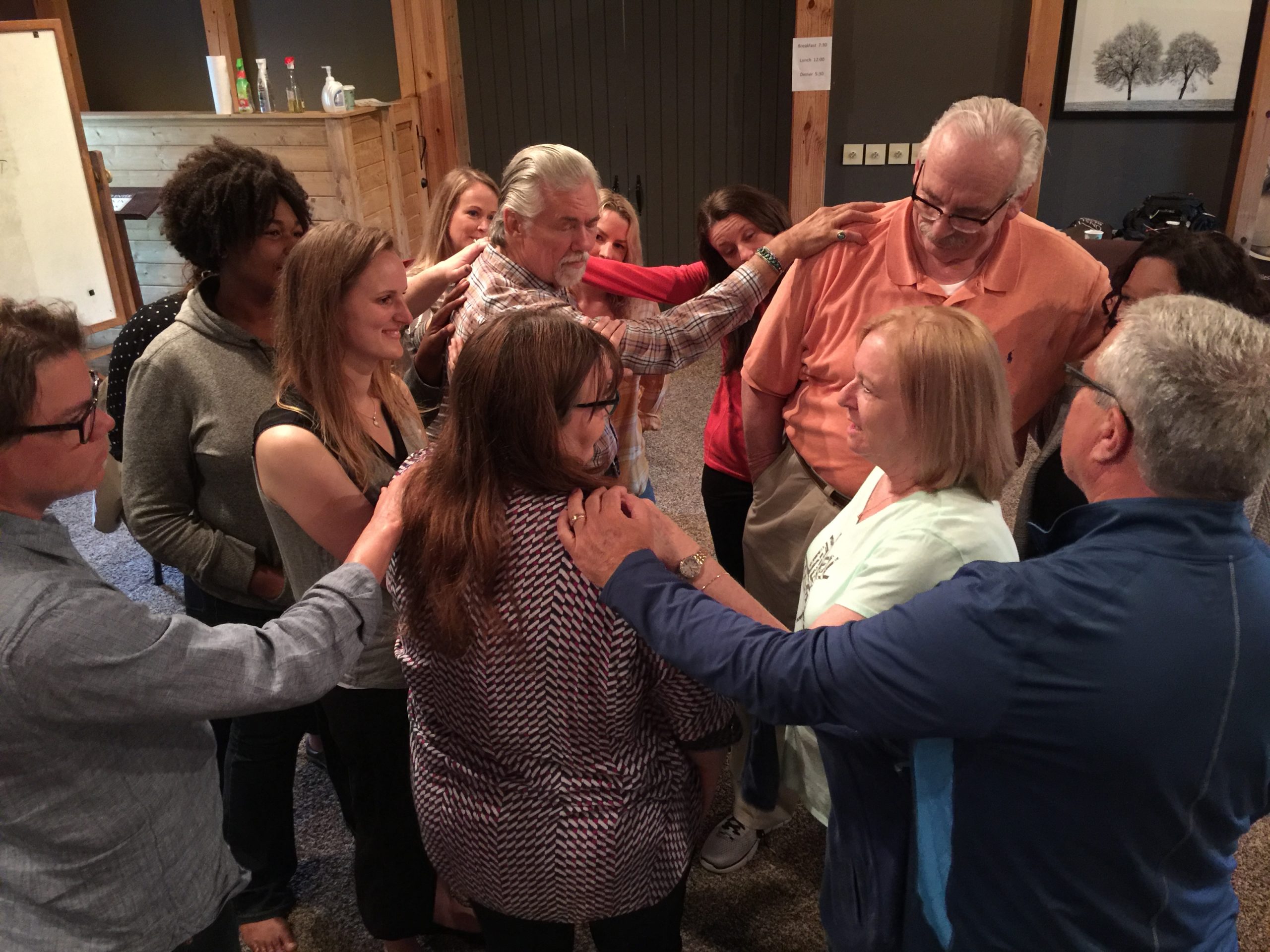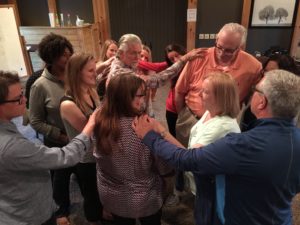Spreading the Sociometric Wealth
 Early on in my Psychodrama training, I was taught that the sign of a healthy group is that the sociometry is always changing. As a Psychodrama Director, I know that if I don’t facilitate that change on a regular basis, it will result in the sociodynamic effect occurring – that is, the same people getting chosen over and over again. While Directors (hopefully!) typically track sociometric patterns like isolates, cliques, subgroups, aristo-tele, etc, one of the sociometric considerations that is often overlooked is the importance of varying the choice in action criterion questions, to allow different people to get chosen protagonist (and in turn, different people potentially being chosen as auxiliaries). In my decades of training and experience, I have seen many practitioners use the same criterion question over and over again when facilitating a choice in action, which often results in stuck sociometry, the sociodynamic effect occurring, and some members of the group not getting what they need. So we’re going to explore how changing the criterion, based on the sociometric configuration of the group, can help “spread the sociometric wealth.”
Early on in my Psychodrama training, I was taught that the sign of a healthy group is that the sociometry is always changing. As a Psychodrama Director, I know that if I don’t facilitate that change on a regular basis, it will result in the sociodynamic effect occurring – that is, the same people getting chosen over and over again. While Directors (hopefully!) typically track sociometric patterns like isolates, cliques, subgroups, aristo-tele, etc, one of the sociometric considerations that is often overlooked is the importance of varying the choice in action criterion questions, to allow different people to get chosen protagonist (and in turn, different people potentially being chosen as auxiliaries). In my decades of training and experience, I have seen many practitioners use the same criterion question over and over again when facilitating a choice in action, which often results in stuck sociometry, the sociodynamic effect occurring, and some members of the group not getting what they need. So we’re going to explore how changing the criterion, based on the sociometric configuration of the group, can help “spread the sociometric wealth.”
Each one of the four ways to choose a protagonist has potential sociometric implications. The Director’s Choice, where the Director chooses the protagonist; Self-Selection, where a group member chooses themselves to work; an Institutional Choice, where an institution (treatment center, prison, school, etc) requires the Director to have a particular person be protagonist, and the Choice in Action, where the group chooses the protagonist.
There are definitely valid reasons for using the first three. For example:
– The Director’s Choice – choosing an isolate who has been difficult to integrate into the group, despite sociometric efforts, to help them get known in the group and expand their sociometric connections
– Self-Selection – following the warm up of a group member who comes to group in high distress, which is atypical, and says, “I need to work today.”
– Institutional Choice – “choosing” a client in a treatment center who is threatening to leave AMA, and needs support to stay
The challenge is that all three of these ways to choose a protagonist run a much higher risk of inviting transference and resentment – towards both you as Director, and the protagonist. Group members may have come in with a very different warm up than what the director chooses, the individual chooses, or the institution chooses, and may not be able to support the drama that is chosen without their input. Moreover, because the group hasn’t had a say in the psychodrama that will be occurring, they may be disengaged, annoyed and resentful during the drama, which will impact the protagonist’s warm up, and the director’s ability to help facilitate an effective drama.
In contrast, the choice in action is the “cleanest” way to choose a protagonist because the theme that emerges during the warm up will be reflected in the psychodrama that is chosen; the group is more able to support the piece because they – not the director, not the protagonist, and not the institution – actually chose the psychodrama (thus inviting far less transference); the psychodrama will more likely represent the stage of group they are in; the protagonist is more likely to trust that the group is supporting them, and therefore, is more likely to “drop in” to the work more deeply, and get their needs met.
CHOICE IN ACTION CRITERION QUESTIONS
Criterion questions for a choice in action are critical in helping the sociometry continue to shift, which will further promote health in a group. If the same people are chosen over and over again, the sociometry of the group becomes stagnant, transferences occur, and there is a greater risk for conflict and people wanting to leave the group.
Due to my strong background in somatic modalities (Trainer and Practitioner of Psychodramatic BodyworkⓇ and Somatic Experiencing PractitionerⓇ), I am biased about the importance of including the body in any warm up and protagonist selection. This is why I teach my students that, in addition to inviting everyone to start the protagonist selection by standing in a circle and putting their foot on a scarf, it’s important to have the group members take a moment to attune to their bodies, and check in with their somatic warm up. Many times, when someone is activated (fight, flight, freeze or fawn), they don’t have the cognitive story, but their body is very clearly warmed up to do a piece of work. By slowing down the process and giving group members time for their bodies to catch up, it allows them greater clarity on whether to keep their foot on the scarf, or take a step back. Moreover, because of the high potential for strong affect when working with the body, by having group members start with their foot on a scarf, and stepping back if they are NOT warmed up, rather than having them step into a circle if they ARE warmed up, it allows for those who might be in a trauma freeze response to not have to move.
Once we have identified the potential protagonists, and they have named what their psychodramas would be about, the criterion question you ask can be critical in maintaining healthy sociometry within the group. We don’t “manipulate” the sociometry through these questions, but we can help the group to move in the direction of balanced sociometry.
Some of the more common criterion questions that are asked in protagonist selection are:
Put your hand on the shoulder of the person…
…whose drama you would like to support today
…whose drama will most help you today
But if there is a potential protagonist who has continued to put themselves forward to work, and has not gotten chosen, or someone who rarely puts themselves forward does so, it can be helpful to tailor the criterion question to assist them in getting chosen. For example, you might consider one of the following:
Put your hand on the shoulder of the person…
…whose drama you haven’t seen in a while
…whose drama you’ve never seen
…whose drama you’re most curious about
Or if you’re working with a theme of role expansion, you might consider asking one of the following criterion questions:
Put your hand on the shoulder of the person…
…whose drama would most help you step into a new role
…whose drama would most help you let go of a current role
…whose drama would most help you expand your role repertoire
Or if you’re doing inner child work or parts work in a group, you might consider asking one of the following criterion questions:
Put your hand on the shoulder of the person…
…whose drama would most help heal a part of you
…whose drama would most help you gain greater access to your inner child
…whose drama would most help you access one of your vulnerable parts
…whose drama would most help you soften one of your defended parts
…whose drama would most help quiet the “itty bitty shitty committee” in your head
Or if you work in the field of addiction and recovery, you might consider asking one of the following criterion questions:
Put your hand on the shoulder of the person…
…whose drama would most help you step more fully into recovery
…whose drama would most challenge your “stinkin’ thinkin;”
…whose drama would best help you tap into hope
Or if you work somatically, you might consider asking one of the following criterion questions:
Put your hand on the shoulder of the person…
…whose drama would most bring healing to your body today
…whose drama would most allow your body to feel settled today
…whose drama would allow your heart to open
…your body is telling you most needs to work today
When the psychodramas named by potential protagonists are somatic, having group members make a choice in action using their bodies can be incredibly powerful. Rather than deciding whom they want to choose and putting a hand on that person’s shoulder, the potential protagonists can spread out in the room, and group members can be invited to go stand by each one of them, and allow their bodies to choose the piece of work, based on the criterion question asked. Once their body has made a choice, group members can then place their hand on the shoulder of the potential protagonist their body is choosing. (This can also be helpful to do when you are conducting a more typical choice in action, and someone in the group is having a really difficult time choosing. Often, when they don’t “know” who to choose, their body does.)
In my training groups, I teach students about the sociometric implications of all four ways we choose a protagonist, and then invite them to break into small groups to identify situations when they might use a Director’s Choice, Self-Selection or Institutional Choice, and why. They can then brainstorm (in the same group or a new one, to mix up the sociometry) different criteria to use for a choice in action in their own groups. This allows them to increase their sociometric awareness and be more conscious when facilitating a protagonist selection, as they continue to work towards greater sociometric health in their groups.

